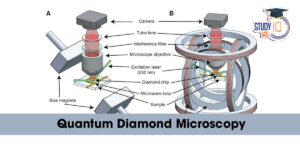Table of Contents
DNA identification has become the gold standard in modern forensic science, criminal investigations, disaster victim identification, paternity testing, and biomedical research. It relies on the unique genetic makeup of every individual and uses advanced laboratory techniques to match unknown samples with known references.
In this article, we break down the key methods of DNA identification, how each technique works, and why they are essential in today’s world.
What Is DNA Identification?
DNA identification (or DNA profiling) refers to the scientific process of analyzing an individual’s genetic material to establish identity, biological relationships, or confirm the source of biological evidence.
It is widely used in:
-
Forensic investigations
-
Terror and blast case identification
-
Missing person cases
-
Paternity/maternity testing
-
Criminal justice systems
-
Mass disaster victim identification (DVI)
Major Methods of DNA Identification
1. Autosomal STR Profiling (Short Tandem Repeats)
Most widely used DNA identification technique
Short Tandem Repeats (STRs) are repeating sequences of DNA found in nuclear chromosomes. Every person has a unique pattern of STRs, making them ideal for distinguishing individuals.
How STR Profiling Works
-
DNA is extracted from bone, teeth, blood, saliva, or tissue.
-
Specific STR regions are amplified using PCR (Polymerase Chain Reaction).
-
Capillary electrophoresis separates fragments by size.
-
A digital DNA profile is created using genotyping software (e.g., GeneMapper).
-
The profile is compared against reference samples.
Why STR Profiling Is Important
-
Highly accurate
-
Legally admissible worldwide
-
Works even with small DNA quantities
-
Used in criminal cases, paternity tests, and blast victim identification
2. Y-STR Analysis (Y-Chromosome DNA Profiling)
Focuses on male-specific identification, as only males have Y-chromosomes.
Uses
-
Sexual assault cases involving male perpetrators
-
Paternal lineage testing
-
Missing person cases linked through father’s side
Limitations
-
Cannot distinguish between male relatives sharing the same paternal line.
3. Mitochondrial DNA (mtDNA) Analysis
When nuclear DNA is degraded due to fire, explosions, or decomposition, mtDNA becomes the best option.
Key Features
-
Inherited exclusively from the mother
-
Exists in hundreds of copies per cell → easier to recover
-
Survives heat and environmental damage better than nuclear DNA
Ideal For
-
Mass disasters
-
Burnt, fragmented, or old skeletal remains
-
Maternal lineage confirmation
Limitations
-
Can confirm maternal lineage but not individual identity with the precision of STRs.
4. SNP Profiling (Single Nucleotide Polymorphisms)
SNPs are single-base variations in DNA sequences.
Advantages
-
Useful for highly degraded samples
-
Provides information about:
-
Ancestry
-
Physical traits (phenotyping)
-
Evolutionary links
-
Applications
-
Cold cases
-
Disaster victim identification
-
Research in population genetics
5. DNA Sequencing (Advanced Genetic Identification)
High-resolution technique that reads entire segments of DNA.
Types
-
Sanger sequencing
-
Next-Generation Sequencing (NGS)
Why It’s Important
-
Can analyze complex mixtures of DNA
-
Detects rare genetic variations
-
Useful in identifying severely damaged remains
Limitations
-
High cost
-
Requires advanced lab infrastructure
6. RFLP (Restriction Fragment Length Polymorphism)
One of the earliest DNA identification techniques.
Process
-
Uses restriction enzymes to cut DNA at specific sequences
-
Patterns of fragments are analyzed
Limitations
-
Requires high-quality DNA
-
Time-consuming
-
Largely replaced by STR profiling
7. DNA Fingerprinting via Minisatellites (VNTR Analysis)
VNTRs (Variable Number of Tandem Repeats) were used before STRs became standard.
Uses
-
Paternity testing
-
Criminal identification (older cases)
Limitations
-
Needs large amount of intact DNA
-
Complex interpretation
How DNA Identification Helps in Investigations
1. Crime Scene Analysis
Blood, hair, saliva, or skin cells can link suspects to crime scenes with high accuracy.
2. Identifying Burnt or Unrecognisable Bodies
Methods like STR, mtDNA, and sequencing confirm identity even in:
-
Blasts
-
Fires
-
Severe accidents
3. Counter-Terrorism
DNA matching helps determine if a suspect:
-
Died in an explosion
-
Escaped and is still at large
4. Resolving Missing Person Cases
Kinship analysis with parents or siblings helps identify unknown remains.
Challenges in DNA Identification
-
Degraded DNA due to heat, chemicals, or decomposition
-
Contamination during collection or storage
-
Limited DNA quantity
-
Mixed DNA profiles in blast sites or assaults
-
Interpretation complexity
Ensuring proper forensic handling, secure chain of custody, and robust analytical methods is essential.
Conclusion
The key methods of DNA identification—from STR profiling to mtDNA analysis and advanced sequencing—form the backbone of modern forensic science. These tools not only solve crimes but also bring closure to families, help identify disaster victims, and strengthen the justice system.
As technology evolves, DNA identification is becoming faster, more accurate, and more integral to global security and human rights.


 State of the Cryosphere 2025 Report: Key...
State of the Cryosphere 2025 Report: Key...
 Quantum Diamond Microscopy: Principle, W...
Quantum Diamond Microscopy: Principle, W...
 Climate Risk Index (CRI): Meaning, Metho...
Climate Risk Index (CRI): Meaning, Metho...

























